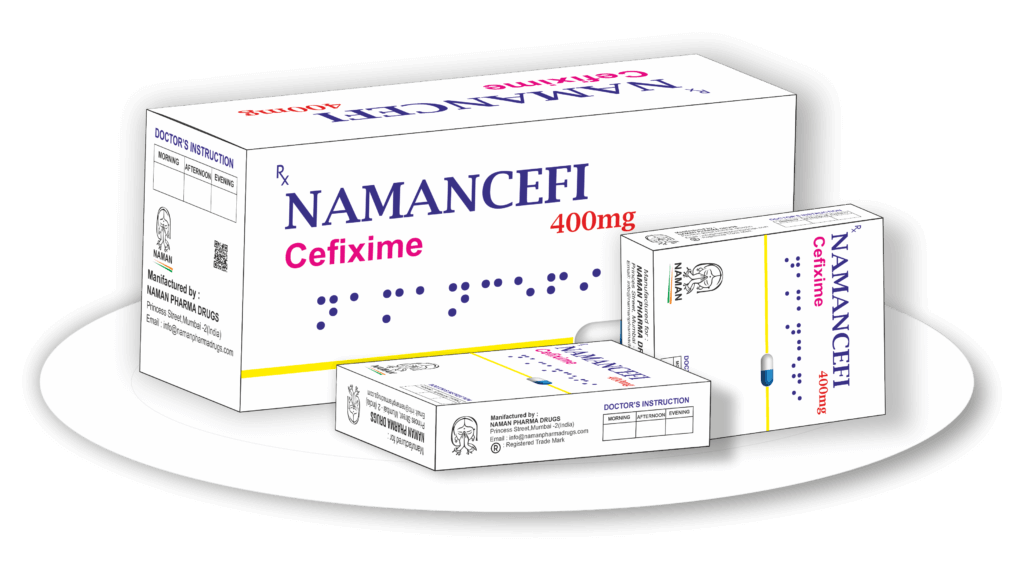
Namancefi- Cefixime 400 mg.
Each vial Contains :
Cefepime Hydrochloride (Static ) I.P.
e.q to Cefepime anhydrous 1000 mg.
(A Sterile dry mixure Cefepime Hydrochloride I.P & L- Arginin I.P)
Dosage : As directed by the Physician.
Storage : Store in cool and dry place. (8’C to 25’C)
Keep all medicines out of reach of children.
DIRECTION FOR USE : Dissolve the contents of vial in 3 ml. of sterile water for injection I.P.
Namancefi Cefixime is an antibiotic medication that is commonly used to treat a variety of bacterial infections. It belongs to a class of antibiotics known as cephalosporins. Cefixime is available in various forms, including tablets, capsules, and oral suspensions, and the typical dosage for adults for many infections is 400 mg once daily. Here’s some important information about cefixime 400 mg:
Indications: Cefixime is prescribed by healthcare providers to treat a range of bacterial infections, including:
1. Respiratory Tract Infections: Such as bronchitis, pneumonia, and sinusitis.
2. Urinary Tract Infections: Including cystitis.
3. Ear Infections: Such as otitis media.
4. Throat Infections: Including strep throat.
5. Sexually Transmitted Infections: Such as gonorrhea.
Dosage: The typical adult dosage of cefixime for many common infections is 400 mg taken once daily. However, the specific dosage and duration of treatment may vary depending on the type and severity of the infection, as well as individual patient factors. Always follow the dosage instructions provided by your healthcare provider.
Duration: The duration of cefixime treatment also varies depending on the infection being treated. It’s important to complete the full course of treatment even if your symptoms improve before you finish the medication. Stopping antibiotics prematurely can lead to antibiotic resistance and the recurrence of the infection.
Precautions:
1. Allergies: Inform your healthcare provider if you have any known allergies to antibiotics, especially cephalosporins or penicillins.
2. Medical History: Provide a complete medical history to your healthcare provider, including any kidney or liver problems, as dosage adjustments may be necessary in such cases.
Side Effects: Common side effects of cefixime may include diarrhea, nausea, vomiting, abdominal pain, and rash. If you experience severe diarrhea or any other unusual or severe side effects, contact your healthcare provider.
Storage: Store cefixime according to the manufacturer’s instructions, typically at room temperature, protected from light. Follow proper storage guidelines to maintain the medication’s effectiveness.
Safety: Cefixime should only be used under the guidance of a healthcare provider, and it should not be shared with others. Follow all instructions and complete the full course of antibiotics to prevent antibiotic resistance.
Adverse Reactions: While cefixime is generally well-tolerated, it can have serious side effects or allergic reactions in some individuals. If you experience difficulty breathing, swelling of the face or throat, or any severe symptoms, seek medical attention immediately.
Always consult with your healthcare provider for specific information about the use of cefixime or any other medication, as individual circumstances and medical conditions may vary, and professional guidance is essential for safe and effective treatment.
